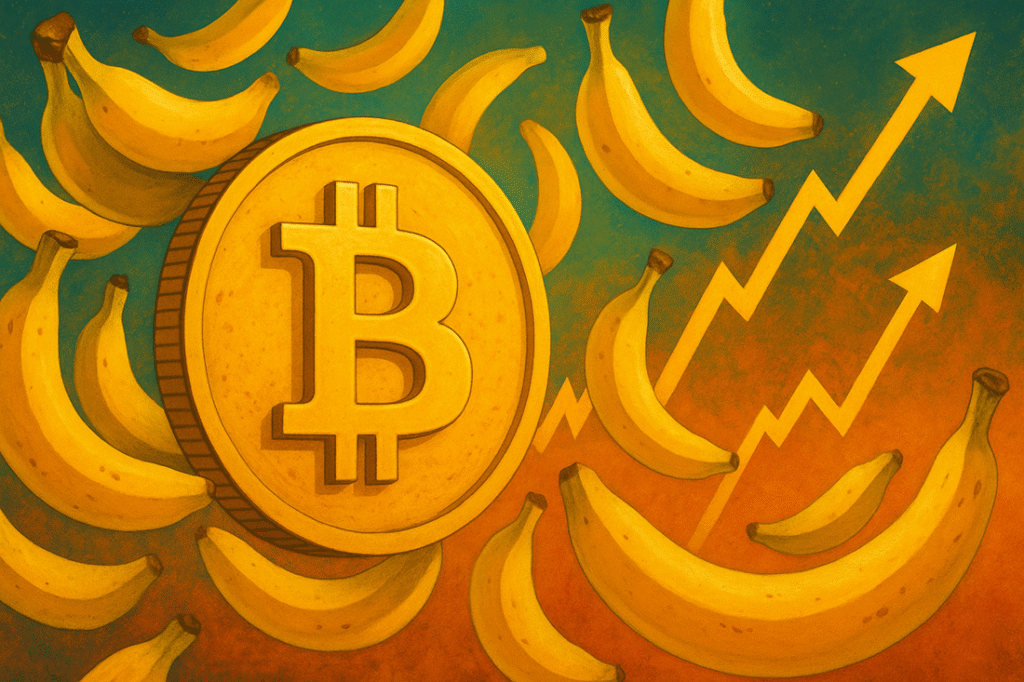The dynamic and ever-evolving world of cryptocurrency trading continues to capture the interest of investors worldwide. Bitcoin’s recent surge to new heights has reignited discussions about the market’s future trajectory. Notably, Raoul Pal, a former hedge-fund macro strategist and co-founder of Real Vision, shared his insights during a live session that painted a picture of the ongoing “Banana Zone.” As market liquidity influences investor behavior, understanding these trends becomes critical for anyone involved in the financial landscape.
Analyzing the Unfolding Bitcoin Market Dynamics
The recent spike in Bitcoin’s value, reaching a remarkable intraday peak, sets the scene for an intriguing discussion on current market dynamics. Raoul Pal, in his engaging “Drinks With Raoul” livestream, emphasizes that we’re merely at the beginning of this rally. He identifies this initial phase as the “Banana Zone,” where investors are drawn toward riskier assets due to increased liquidity resulting from expected policy interventions, particularly in the bond market.
The Unique Nature of This Bitcoin Cycle
Pal highlights the resurgence of the US 10-year yield above 4.4%, not as a sign of overheating prices but due to collateral scarcity. He states, “Bond yields are climbing. Typically, this isn’t favorable… Yet, inflation is continuously dropping. The story here revolves around liquidity constraints within the bond market, prompting government actions to inject more cash.”
Predicting the Federal Reserve’s moves, Pal suggests potential relaxations in the supplementary leverage ratio (SLR) to enable primary dealers to absorb more Treasuries. This action might be complemented by a form of yield-curve control. Describing these measures, he explains, “By July, leveraging the SLR, banks could expand bond holdings, creating new bond buyers. If insufficient, a new yield-curve control measure might be introduced under a different label.”
Such strategies, according to Pal, significantly reduce market risks and stimulate demand for scarce assets, echoing market conditions from 2017, when various assets, including stocks, gold, and Bitcoin, saw significant gains.
Understanding Dollar Dynamics
Pal illustrates Bitcoin’s reaction to fluctuations in the dollar through a comparative chart. He notes, “During Trump’s first term, the dollar declined significantly. We’re witnessing a faster replay of that scenario… A weakened dollar plays a pivotal role globally. Historically, Bitcoin’s value has surged following substantial dollar drops, with gains of 119%, 175%, or even 592%.”
He dismisses tariff disputes as mere negotiations, asserting that the US focuses more on bond sales than disrupting trade.
Ethereum and Altcoins’ Potential Surge
While celebrating Bitcoin’s climb, Pal also points to Ethereum and other high-beta Layer-1 tokens as potential outperformers once the ISM manufacturing index rises above 50. His financial-conditions index, which leads the ISM by nine months, signals an impending altcoin season. “The ETH-BTC ratio is stabilizing, and Bitcoin’s dominance appears to have reached its peak.”
Unveiling Opportunities in Solana, Sui, and Dogecoin
Pal turns his attention to Solana and Sui, noting their technical formations on charts as promising indicators. His commentary on Dogecoin carries a humorous tone: “Imagine a scenario where Dogecoin eventually surpasses Bitcoin in performance and becomes the world’s hardest currency. While surprising to some, current chart patterns suggest it’s possible.”
Despite his enthusiasm, Pal advises caution. His global-M2 model indicates Bitcoin’s potential to exceed $140,000 by July. However, he warns of a sideways phase in July-August as the dollar potentially reverses. Investors are advised to consider adjusting their positions during this phase, mindful of the broader market cycle.
The overarching “Banana Zone” narrative extends into 2026 unless an unexpected policy shock occurs. Pal challenges the notion of diminishing returns, asserting the consistency of market cycles. He states, “Policy-driven liquidity, a weaker dollar, and bond-market adjustments funnel capital into scarce assets. Whether one subscribes to the ‘Banana Zone’ term or not, market conditions align with this perspective.”
How Does the Bond Market Influence Bitcoin?
Raoul Pal argues that the Federal Reserve’s actions in the bond market, such as relaxing leverage ratios, can boost liquidity, driving capital into scarce assets like Bitcoin. These moves potentially minimize risks and enhance Bitcoin’s appeal as a store of value.
What Factors Could Trigger an Altcoin Season?
Pal suggests that a rise in the ISM manufacturing index above 50 may herald an altcoin season, as financial-conditions indices already signal improving economic conditions. Such trends could shift investor focus from Bitcoin to Ethereum and other altcoins.
Is Investing in Bitcoin Still Profitable?
Despite Bitcoin’s volatility, many experts, including Pal, project continued growth driven by liquidity influx, a weaker dollar, and structural market shifts. Potential investors should conduct thorough research and stay informed on market trends before making investment decisions.
The financial landscape remains dynamic, with Bitcoin at an unprecedented high. As Pal’s insights reveal, understanding policy implications, market liquidity, and technical trends can inform strategic investment decisions, positioning investors to navigate and potentially benefit from the unfolding cycles.

